“You don’t have to reimagine the world with robotics in it, because the world already exists with it in it. Just not in landscape.”
But with leaders like Ben Collinsworth (featured in the video above) that’s all changing……. fast.
If you’re curious about robotic mowing (and if you ended up here, we’re assuming you are) please invest five minutes in this video we put together, where you’ll hear what our experts and real-world operators have to say about how robots are reshaping our operations, then read on below.
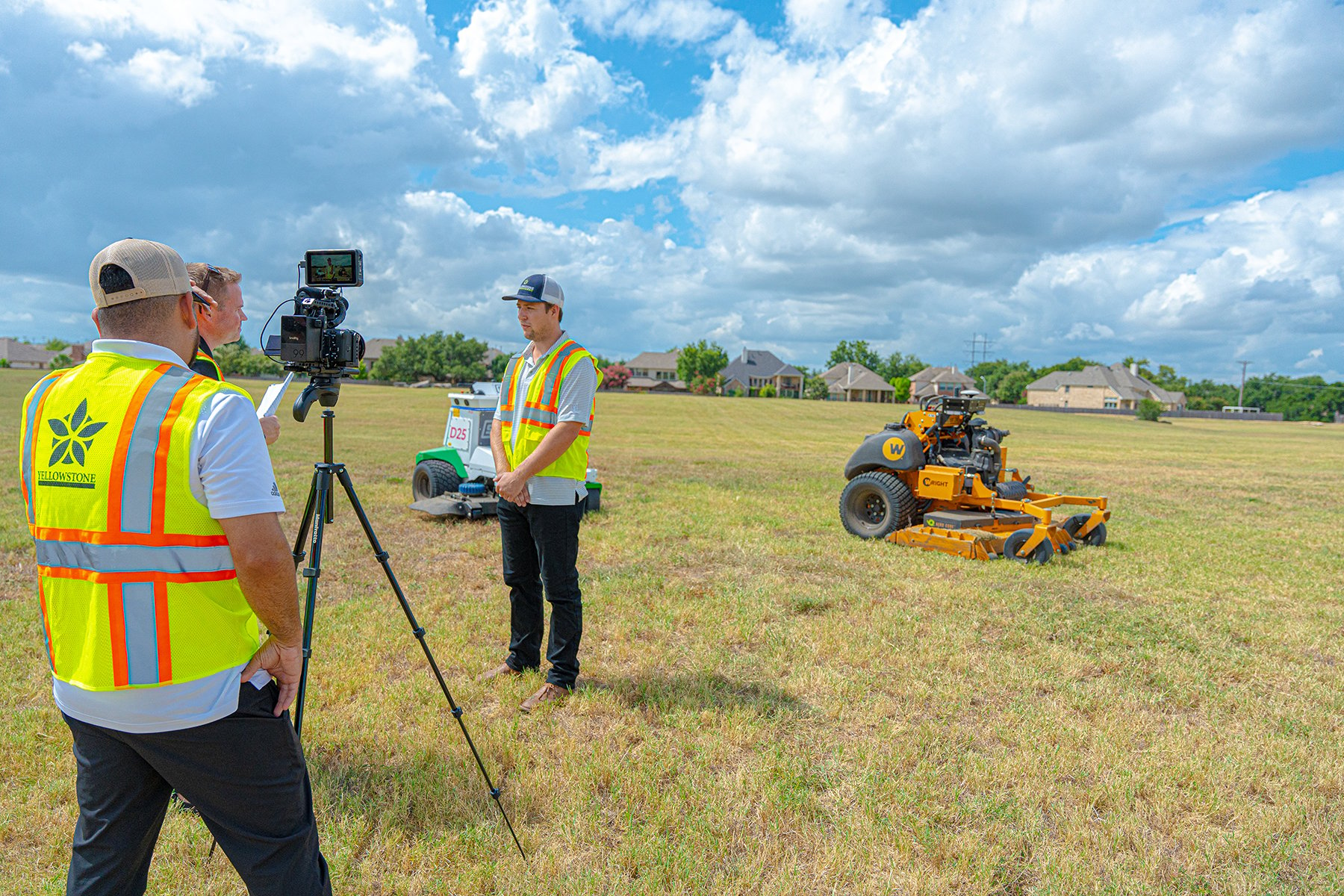
Robotics are a part of our operations at Yellowstone Landscape today. In fact, they’ve already been in production in some of our locations for several years now.
And as with any change, the reaction to seeing more and more robotic mowers being deployed across our branch locations ranges from enthusiastic excitement to open skepticism.
So, in this article, we’d like to call out three important things we learned when we spent time with our teams using these revolutionary new pieces of equipment in real world operations today.
Robotic Mowers Will Not Replace Humans
This is perhaps the biggest misconception about these machines that needs to be addressed early and loudly. Robotic mowers are here to assist our Landscape Professionals, they are not here to take anyone’s job.
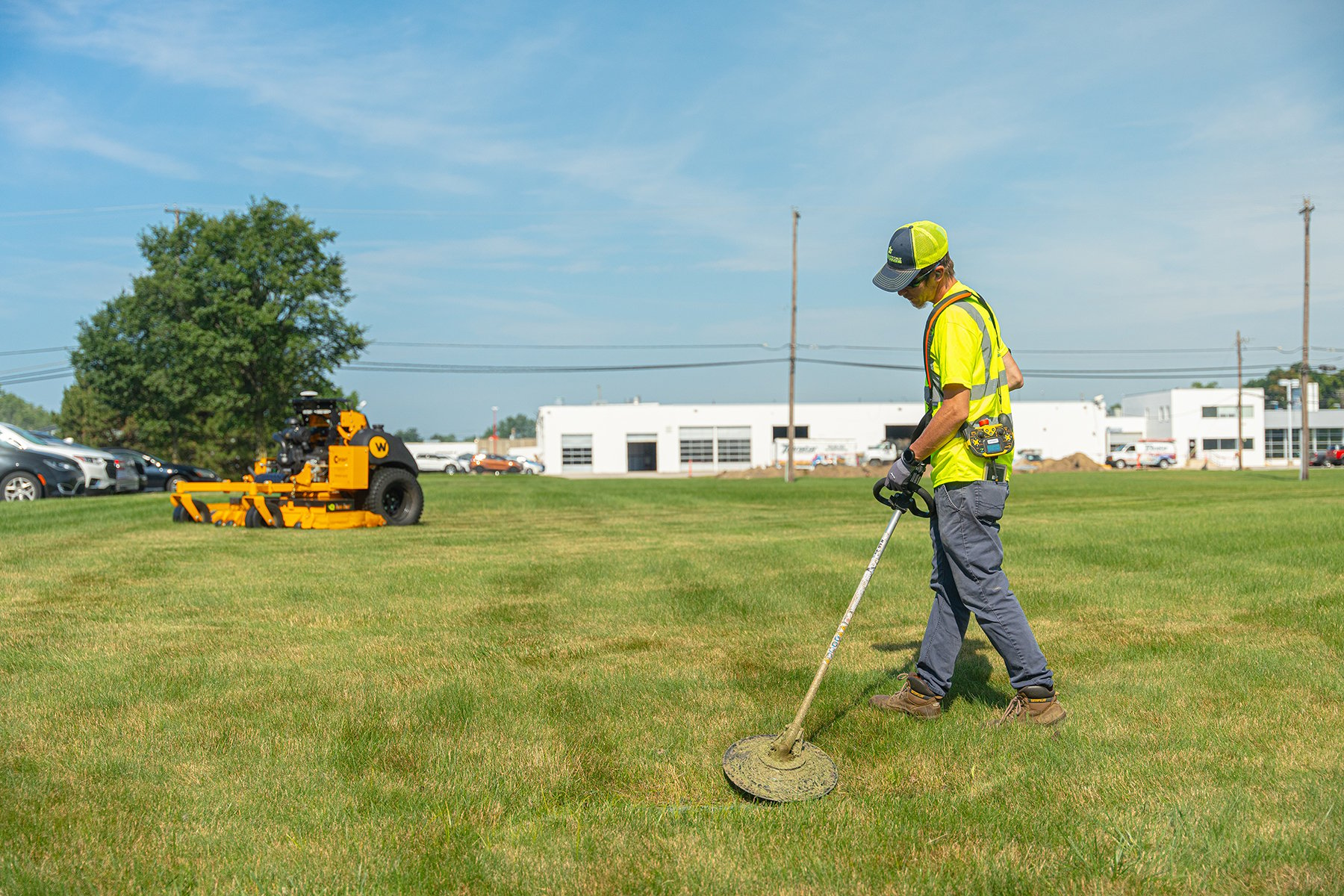
After rolling out robotic mowers of all sizes and types on several different types of client properties, not one single Yellowstone employee has lost their job to a robot. We’ve actually found the opposite to be true. In our locations where robotic mowers have been added to their fleet, hiring is up.
Branches that are willing to embrace these robotic mowers are some of our fastest growing locations. They’ve realized that, used in the right settings, robots can not only help them serve their existing clients better, but with the robots in their fleet, they have new bandwidth to take on more properties and develop new client partnerships.
Here’s a little behind the scenes look at how robots and mowers work together on one of our landscape crews:
Let’s say a typical maintenance crew was made up of 4 Landscape Professionals. Before they had a robotic mower, you might see two of the crew members on mowers, one doing string trimming or edging, and one doing pruning or detailing.
When we add a robotic mower to that same crew, the robot doesn’t replace one of the humans who was mowing. Instead, we take the crew member that was riding a mower all day back and forth in large, open spaces and ask them to shift their focus to more detailed tasks, like pruning or detailing. These higher value, more specialized tasks are the types of work that require the skills and experience of the human eye and are generally where our clients see the greatest value in our services.
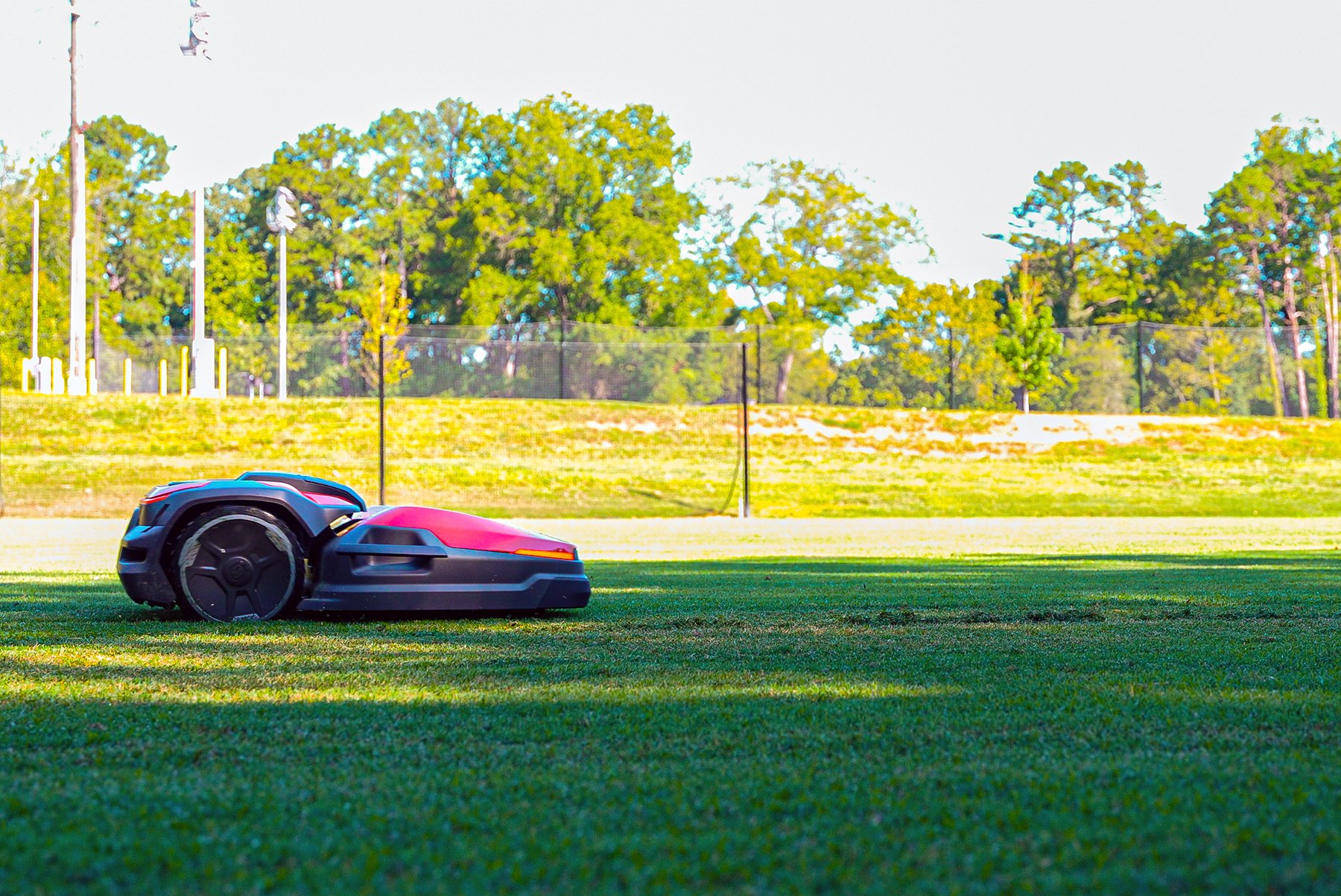
Robotic Mowers Will Continue to Improve, Quickly
Landscaping is hard work and some of the earliest robotic mowers we saw were definitely not up to the challenge. But long gone are the days of melting circuit boards and multiple sensor failures with every bump in the grass.
The eagerness to learn and the pace at which the manufacturers of robotic mowers can adapt is truly impressive. As a production partner, testing many of these machines in their earliest stages, we’ve had a front row seat to the birth of a new generation of mowing technology that will change our industry forever.
Those robots that pull your items from shelves in huge, temperature-controlled warehouses have it so much easier than the robots that work in our landscape crews. Uneven terrain, wet grass, mud, trees, 100-degree heat, inquisitive members of the public that approach them for a closer look – all things that the robotic mowers we use have had to develop systems to handle.
We are still living in the early stages of development, but robotic mowers are far enough along that they are already a huge help to us, in the right settings. For the most part, our robotic mowers in operation today are deployed on our client properties with large, open spaces. Public parks, dry retention pond beds, sports fields…these are spaces where robotic mowing is proving to be a great help for our crews.
Monotonous back and forth mowing is the perfect early application that we’ve found. Setting the perimeter and having the robot fill in the area is a huge time saver, and in the case of sports fields particularly, robots are more efficient than some of our human operators. Recent upgrades to some units even allow the user to set stripe or decorative patterns in the turf by adjusting blade height as the machine mows.
With every software update we see great progress being made. Progress that opens up new types of properties for use with our robotic mowers. We estimate that today’s robotic mowers are capable of servicing 10-20% of our clients’ properties. At our company’s size, that amount represents hundreds of these units we can put to use. And with every improvement, more and more of our mowing areas can be done via robotics, allowing our Landscape Professionals to spend even more time on those important detailing tasks that will likely always require the experience and eye of a human being.
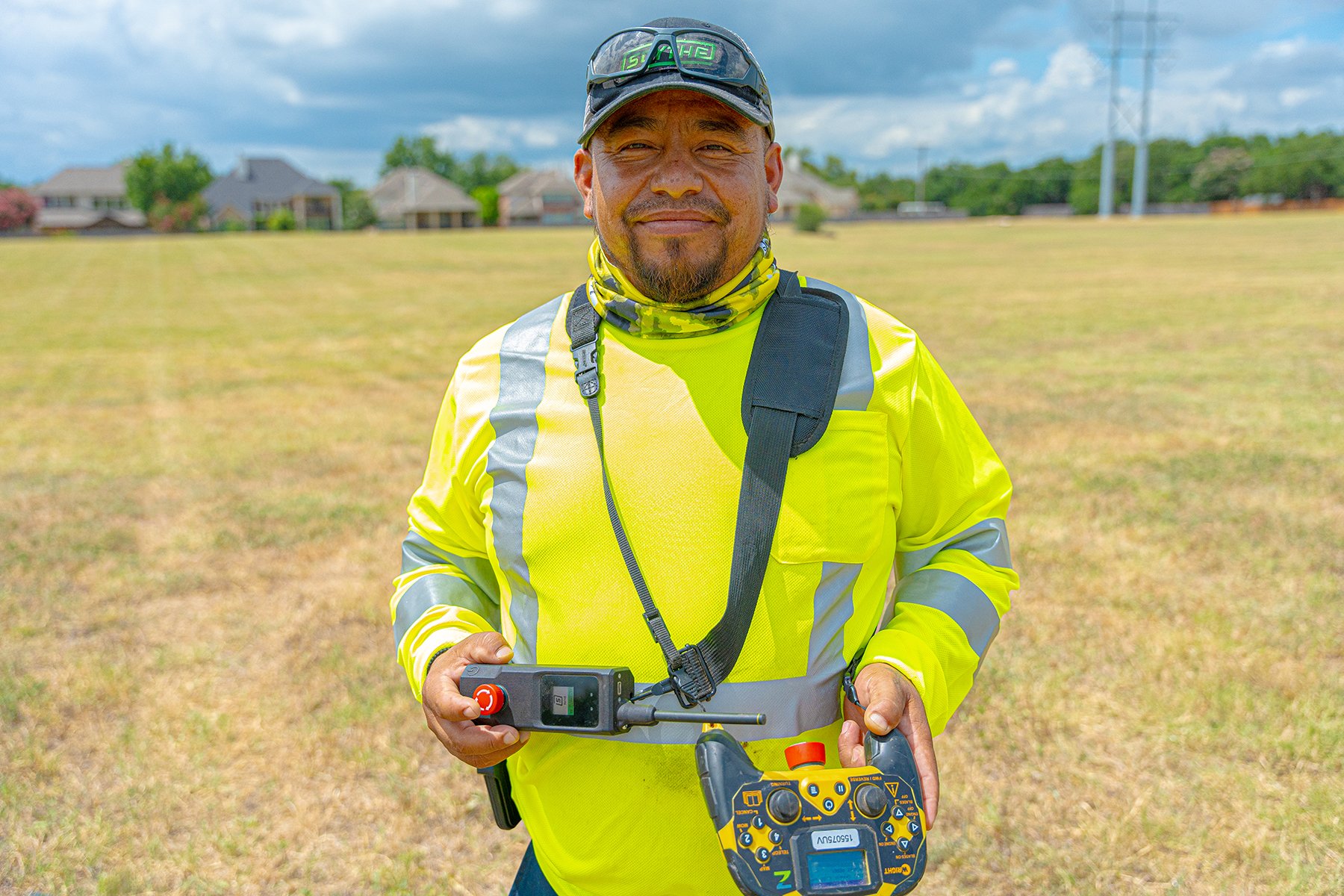
Robotic Mowers Are Good for Everyone in Our Industry
As Yellowstone Landscape has grown one of the largest companies in the commercial landscaping industry, we’ve consistently tried to embrace the responsibility that comes with the great success we’ve enjoyed over the past decade.
We’re obviously very proud of our team and all the work we’ve done with the manufacturers that are working so hard to bring robotic mowing from concept to reality. If the largest companies in our industry weren’t willing to jump in and provide feedback to these manufacturers, robotic mowing might still be in the concept and testing phase. Instead, these machines are out in the field every day, contributing and helping us fulfill the promises we’ve made to our clients.
Robotic mowing is already attracting renewed interest and attention to the landscape industry. While we may have once been considered “just a job” by some younger generations, our hope is that by embracing technology we can open their eyes and show them that the landscape industry is a place where anyone can make a career.
And for our existing employees like Armando, the crew leader featured in the video at the top of this page, robotic mowing creates new opportunities to learn and develop new skills. No longer is he just an expert mower operator. He is now a guide – a pilot controlling multiple robotic mowers deployed across a job site, and someday soon, mowers deployed all across the country.
If you’re a Landscape Professional, reading this and wondering what it would be like to get in on the ground floor of this game changing technology, consider joining us.
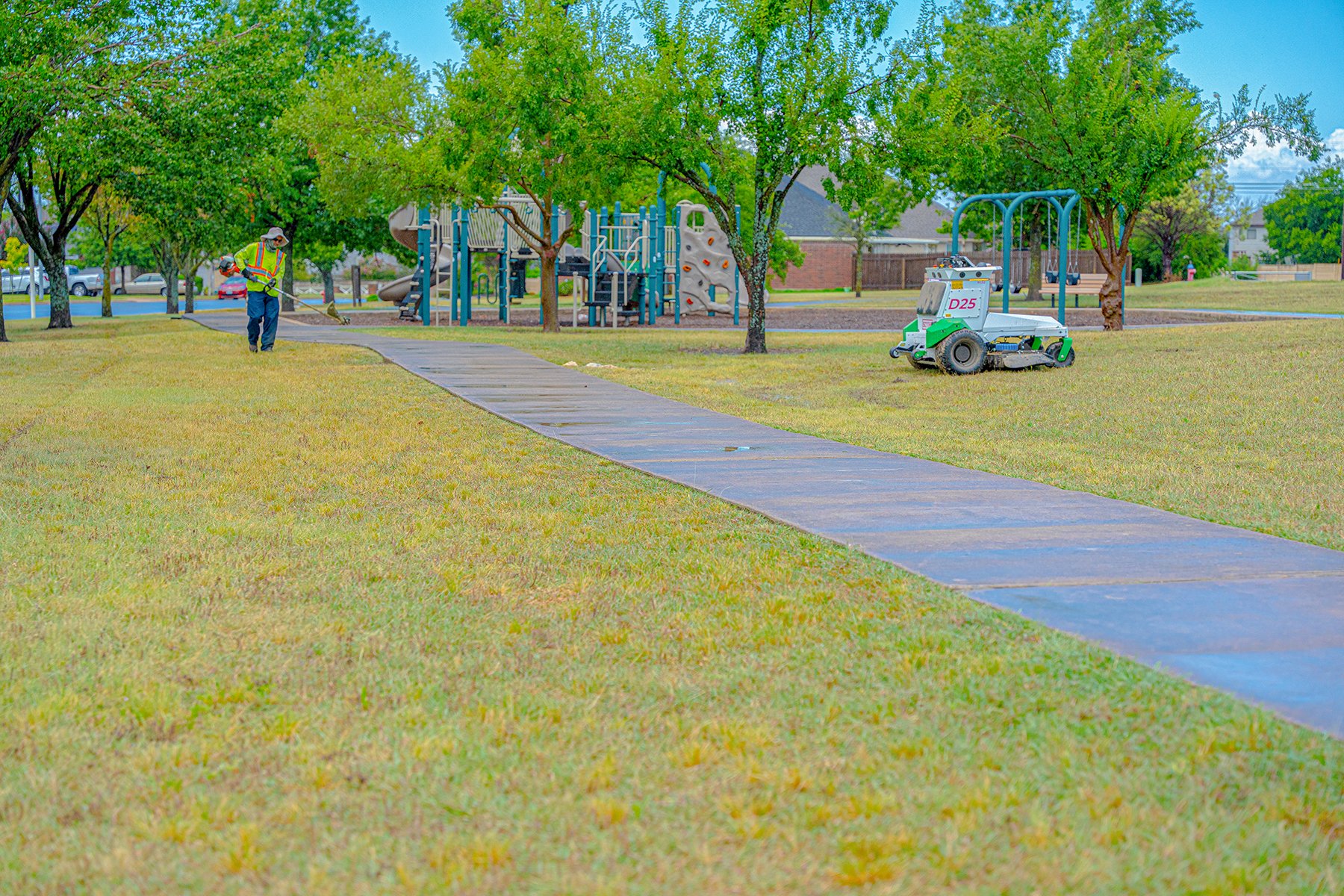
Imagining the world of commercial landscaping with robotics isn’t as hard as it once was. If you ever get the chance to watch one of our robotic mowers, working alongside our Landscape Professionals, we think you’ll be just as impressed as we’ve been to see how far this technology has already come.
Yes, robotic mowing is here and getting better every day, but it’s important to remember that it’s never a substitute for an experienced Yellowstone Landscape Professional.
If you’re curious about how robotic mowing might be used to serve your property’s landscape, give us a call today. We’d love to show you how our innovative approach could benefit you and your landscape.


